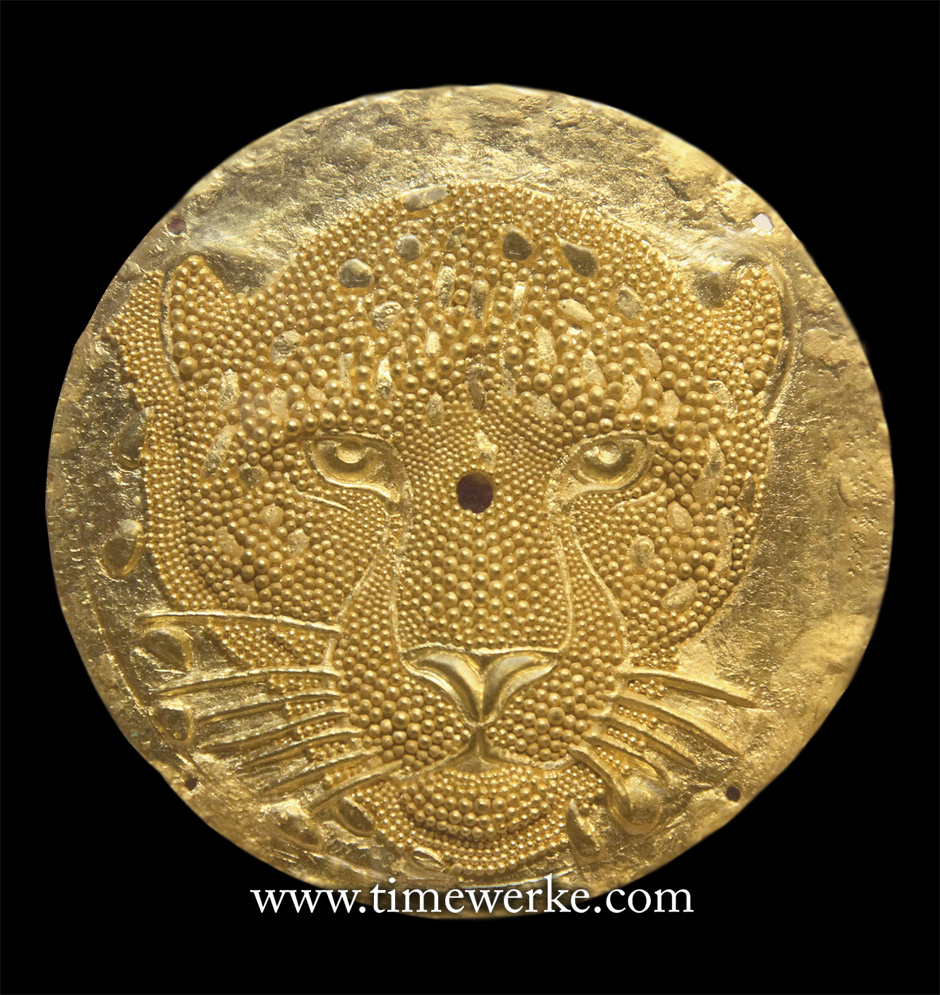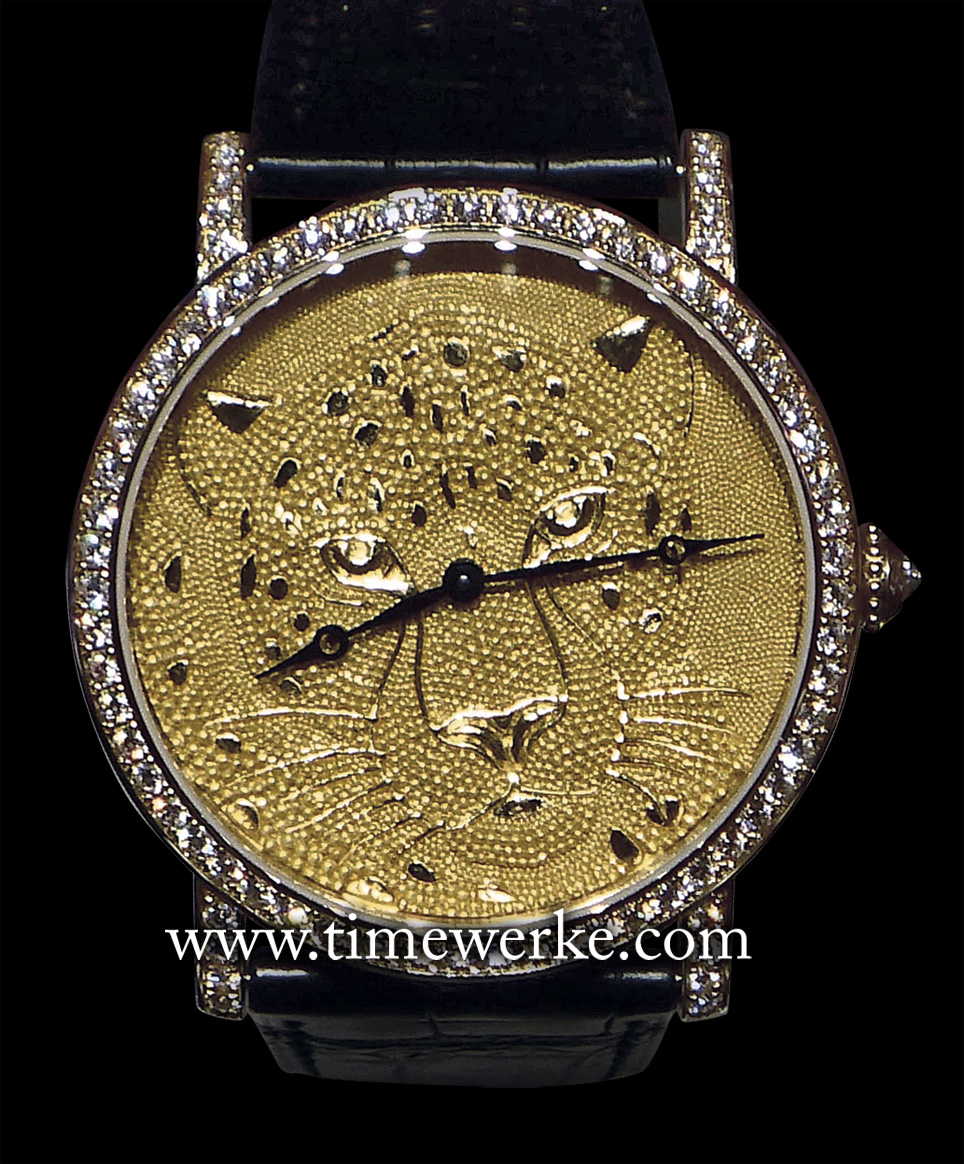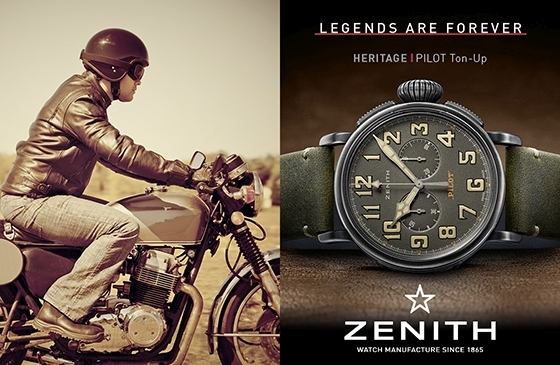
The granulated dial of the Rotonde de Cartier 42mm watch, panther with granulation watch. Photo: © TANG Portfolio. Elfa / Timmy.
Timepieces were among the jewellery pieces showcased at the Étourdissant Cartier exhibition staged at the Singapore Pinacothèque de Paris at the Fort Canning Arts Centre in October 2015.
We were actually delighted to sight the Rotonde de Cartier panther granulation watch, a timepiece that was launched in 2013.
Take a closer look at its dial and the seedbed of gold granules. This explains why it is a “granulation” watch.
The granulation technique is actually an ancient craft whereby granules of precious metal, typically gold or silver alloys, are fused to a metal surface through heating.
For the granulation technique used for the Rotonde de Cartier 42mm watch, panther with granulation, gold granules are first obtained from threads of gold that are cut and heated over a flame.
These gold granules are then painstakingly placed individually and fused with the gold plate to create the relief of the motif. That means lots of hard manual work involved and explains why the Rotonde de Cartier 42mm watch, panther with granulation is limited to only 20 pieces.
The end-result of all the hard work is the splendidly textured panther formation on the dial.

Rotonde de Cartier 42mm watch, panther with granulation. This watch was showcased at the Étourdissant Cartier exhibition staged at the Singapore Pinacothèque de Paris at the Fort Canning Arts Centre in October 2015. Introduced in 2013, it is powered by the Manufacture Calibre 9601 MC manual-winding watch and features the panther granulation on a 22K yellow gold dial. The 42mm diameter case in 18K yellow gold set with 306 diamonds (approx. 3.63 carats) and its double adjustable folding clasp in 18K yellow gold is set with 43 brilliant-cut diamonds (0.42 carats). Limited to 20 pieces. Photo: © TANG Portfolio. Elfa / Timmy.
Such a technique is said to date back to first half of the third millennium B.C. and according to Cartier, this art form “reached its peak during the first millennium in Etruria with famous period objects in ‘Etruscan granulation’.”
In ancient times, Etruria was a region in central Italy, an area that now includes Lazio, Tuscany and Umbria. Estruscans refer to the ancient people of Etruria.
We applaud Cartier for reviving the granulation ancient art form. We also think it was extremely apt to first pair it with the brand’s symbolic animal – the panther.
Why? Perhaps such an ancient art form would have been forever lost if not for the cat’s nine lives?
Another related article on timewerke.com is: Orchid Granulation and engraved mother-of-pearl motif on the Ballon Bleu de Cartier 42mm watch: Gifts from the ancients


